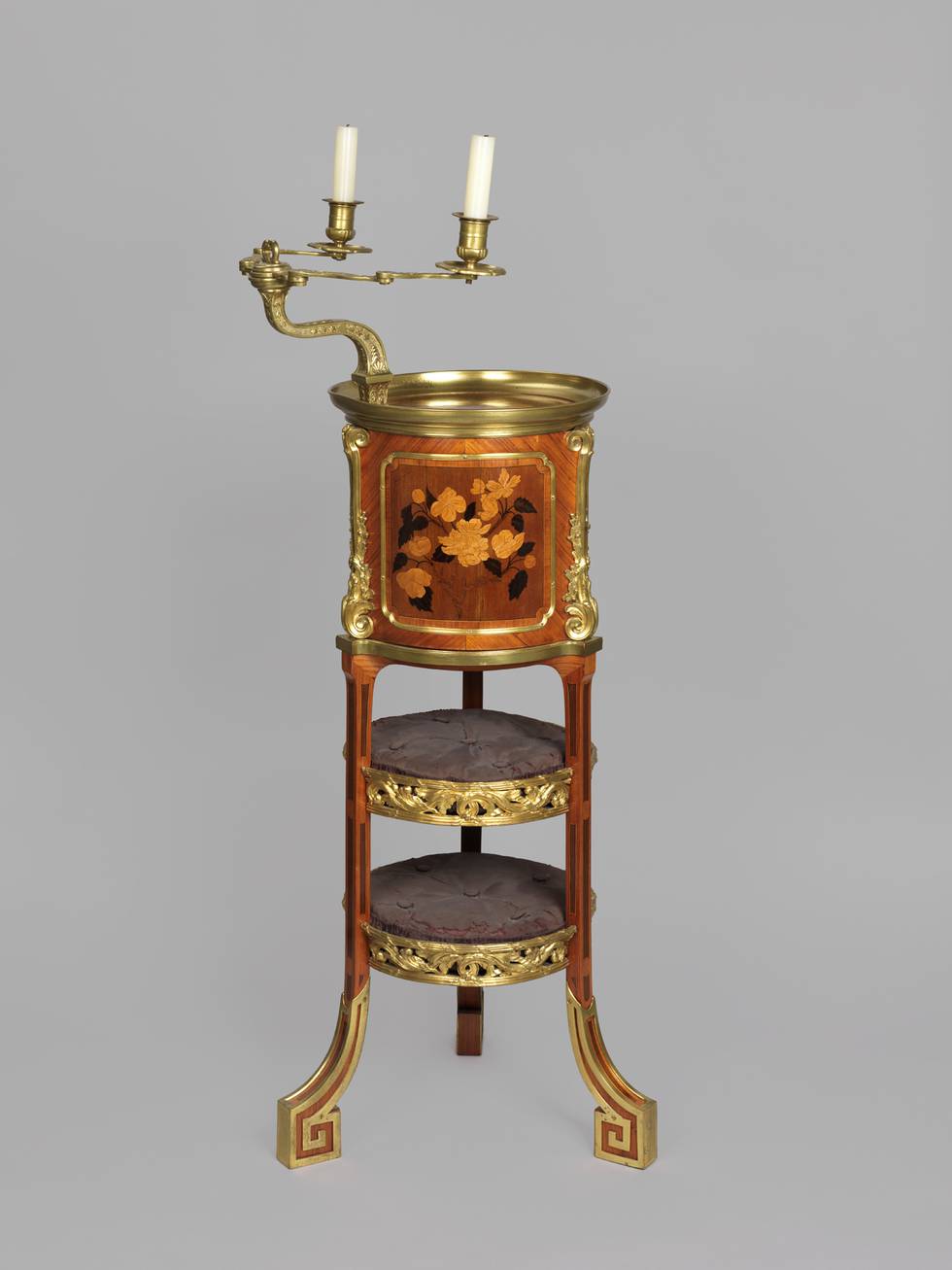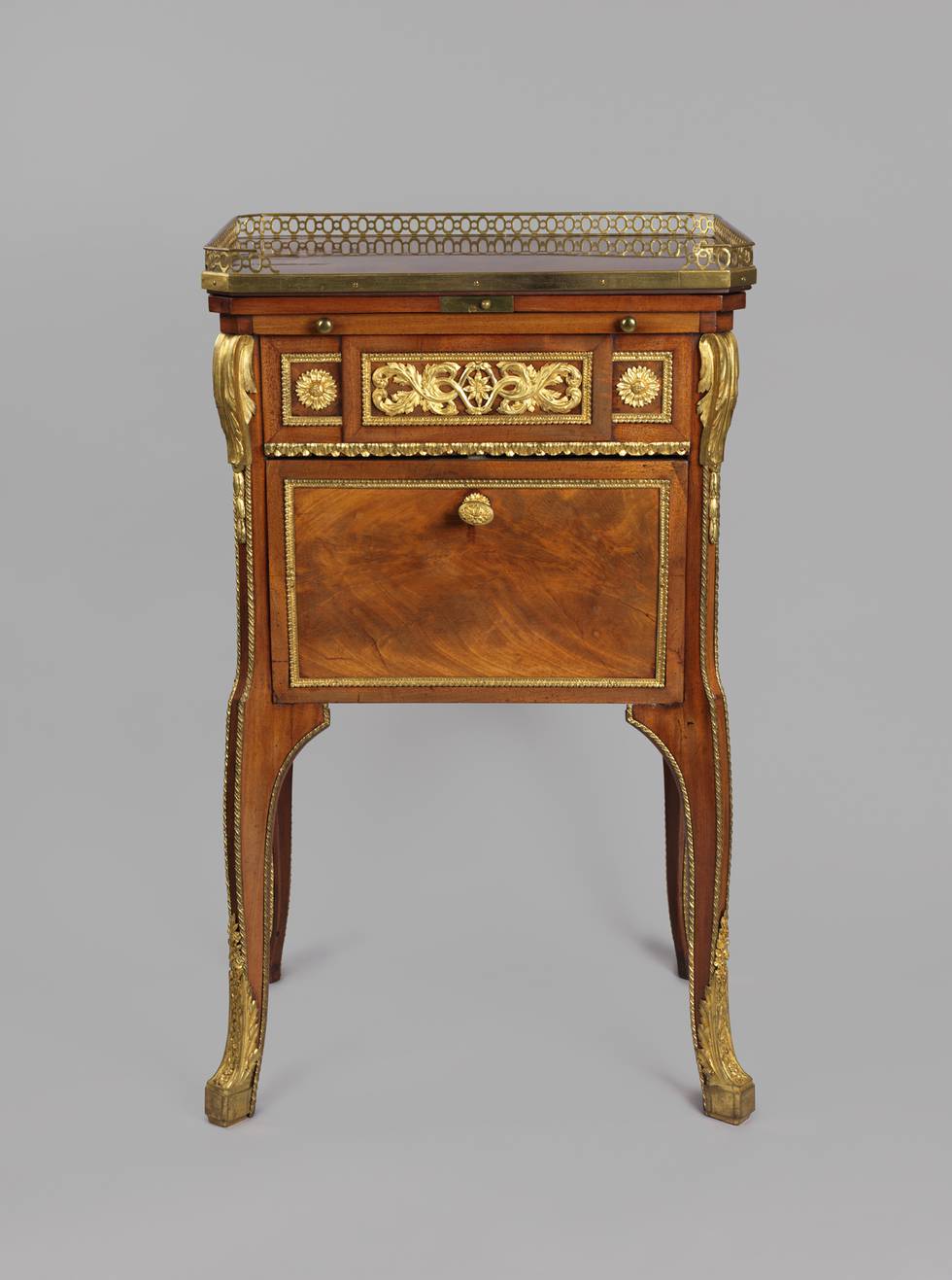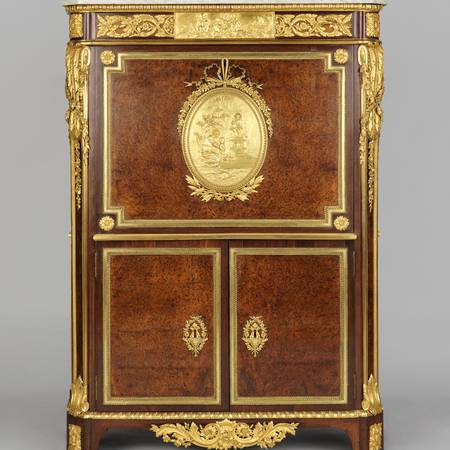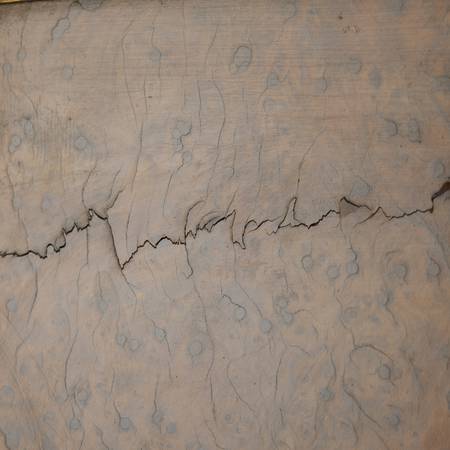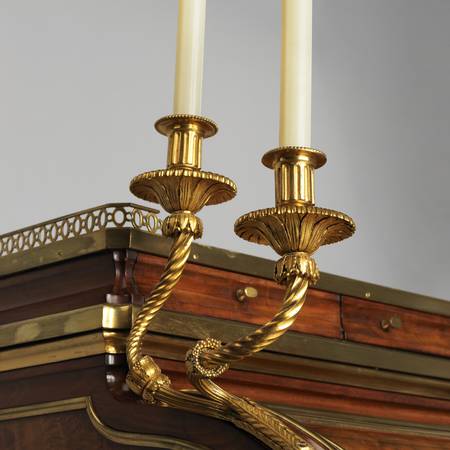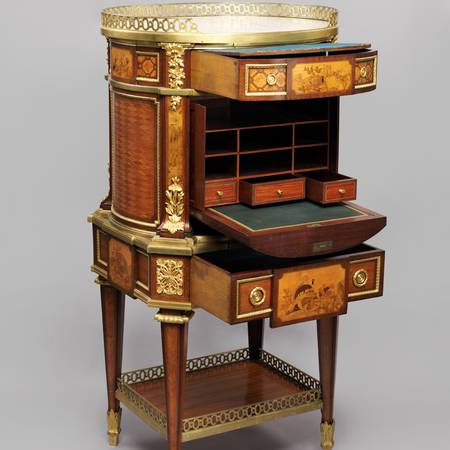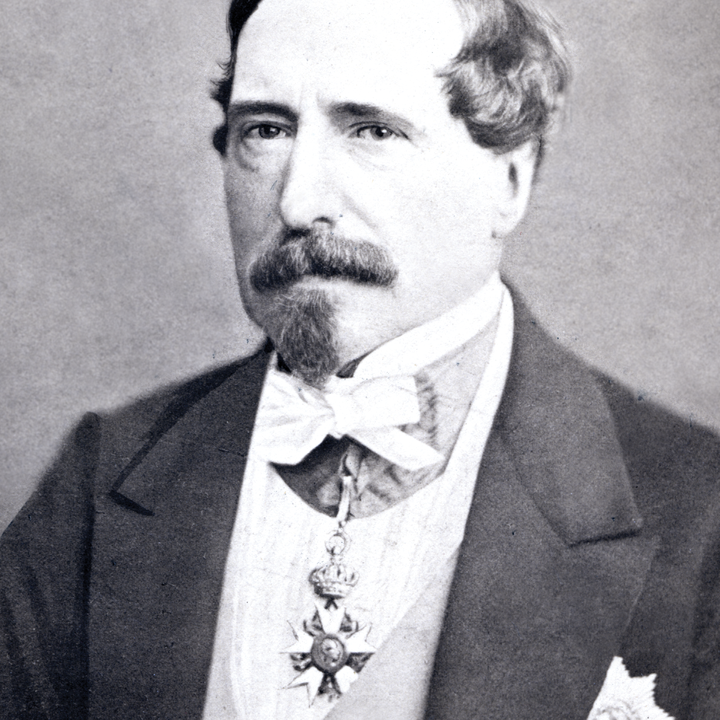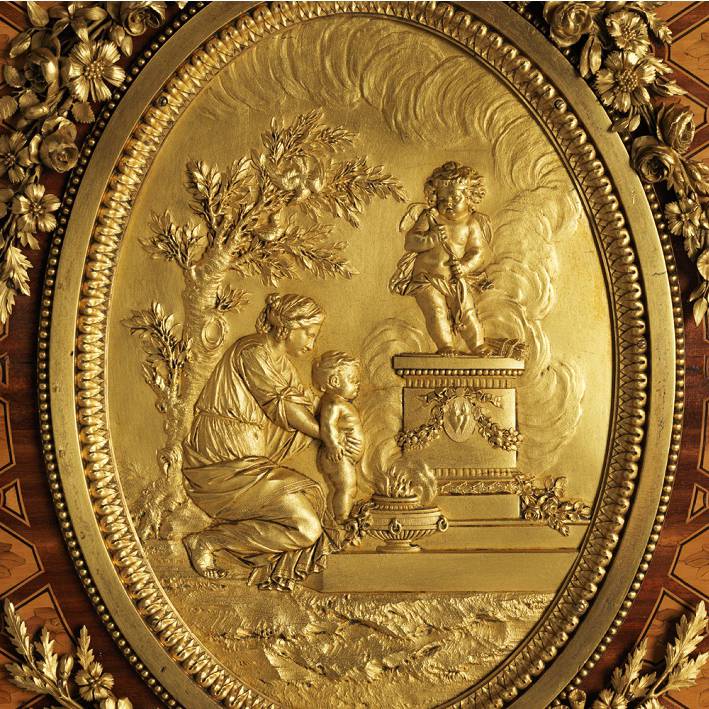Meet the Expert: Riesener in the 19th century
Great pieces of furniture may be collected as art objects, but they are also used as part of people’s living spaces and can be subject to changes in fashion. Sometimes this means that they are altered to fit better with the taste of a certain period or to suit the scheme of a room or, as functional objects, their usage is adapted to fit new requirements. At the Wallace Collection we have several pieces associated with Riesener that tell interesting stories about the way his furniture was perceived in the 19th century.
Dr Helen Jacobsen, Curator of French 18th-Century Decorative Arts
Work table, Cabinetwork attributed to Jean-Henri Riesener; model designed by Jean-François Oeben, c. 1765 (F313)
With its integrated candle branches and silk-covered shelves for needlework, this little table was the perfect accessory for a wealthy lady’s sitting room in the 18th century. It was made in the workshop of Jean-François Oeben, probably by Riesener when he was a young man.
Work table, Attributed to Jean-Henri Riesener or Jean-François Leleu, 1760–65 (F311)
A very similar table also comes from the same workshop and may have been made by Riesener or his colleague, Jean-François Leleu. Yet at some time in the first half of the 19th century, the second table has been adapted by adding three porcelain shelves.
This was done to appeal to the passion for Sèvres porcelain that consumed British collectors, and turned the table from a functional object into a prized work of art.
TAKE A CLOSER LOOK
Writing and toilet-table, Cabinetwork attributed to Jean-Henri Riesener; mounts attributed to Étienne Martincourt, c. 1780–84 (F322)
Intended for use as a small writing desk when it was made in the 1780s, this table has shelves at the front for storing papers and compartments for pen and ink in the side. The surface could be raised to reveal a mirror, giving it a second function as a toilet table for doing make up.
Yet by 1865 the shelves in the front had been removed and replaced with a cupboard for a chamberpot – it had become a bedside table and was later used by Sir Richard and Lady Wallace in their bedroom.
TAKE A CLOSER LOOK
Fall-front desk, Cabinetwork by Jean-Henri Riesener; mounts attributed to Étienne Martincourt (chasing) and François Rémond (gilding); re-veneered, medallion added, c. 1794–1825 (F303)
Marie-Antoinette loved Riesener’s furniture and used this desk in her private sitting room at Versailles. It was designed to suit the rest of the décor, and was veneered with a form of trellis-pattern marquetry that Riesener used regularly on his royal pieces. In the centre was an oval marquetry plaque, probably depicting a pastoral theme or a trophy of love.
For reasons of fashion in the early 19th century the entire desk was reveneered with the fashionable burrwood we now see, and the beautiful gilt-bronze medallion, depicting a Sacrifice to Love, replaced the marquetry plaque. Colourful marquetry was out; plain veneers and gilt bronze were in.
TAKE A CLOSER LOOK
Cylinder desk, Cabinetwork attributed to Jean-Henri Riesener, c. 1785 (F277)
One of the plainest pieces of Riesener furniture is this stunning desk, veneered in mahogany. The deceptively simple gilt-bronze mounts are limited to the edges and the legs, the drawer handles, and the elegant candelabra which appear like twisted cord running down the sides.
This aesthetic is very far from the highly-decorated furniture usually associated with Riesener and it was not recognized as being by him when it was catalogued in the 1870s; then it was thought to be a piece of Empire furniture, dating from the early 19th century.
TAKE A CLOSER LOOK
thWriting desk, France, c. 1840–60 (F306)
In the 1860s, of all the pieces in Lord Hertford’s collection, this desk was considered to represent the height of 18th-century craftsmanship, when French furniture was believed to have ‘touched perfection’. It was attributed to Riesener.
Recent research suggests that this is not the case. Although many of the elements — including the marquetry panels, the parquetry lozenge veneer and some of the mounts — appear to be in Riesener’s style, the overall construction and inelegant design are not now considered to be representative of his work. Instead it is believed to have been made up in the middle of the 19th century, at a time when Riesener furniture was highly sought-after by collectors, with the intention of deceiving a collector. It seems to have done just that.
